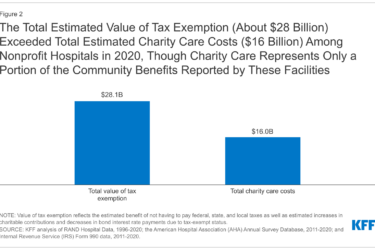Give me an f…
… for Flexibility, that is. Flexibility is the buzzword these days, as federal health officials coax states along the road to exchange creation. (See some updated resources at the end of this post.)
Steve Larson, director of the Center for Consumer Information and Insurance Oversight at CMS, is the point person on a lot of the state regulatory issues under Health Policy. He spoke at a Health Affairs-sponsored breakfast with reporters in Washington, D.C., recently. He was sort of a blend of federal regulator and state cheerleader.
Exchanges under the health law must be up and running on Jan. 1, 2014. States must be certified as “on track” in January 2013. In states that don’t have an exchange, the federal government will step in – “federally-facilitated” is the term of art among administration officials, not “federally-run.” The Department of Health and Human Services hasn’t said exactly what that federal fallback will look like. Meanwhile, a lot of states are still either locked in a political argument over whether to set up an exchange and how to design and regulate it, or have a long way to go to complete the complex tasks required to set one up.
Larson noted that states are making progress. But federal health officials recently made clear (in newly released proposed regulations) that they realize that a lot of states may need a bit of extra help. That’s why “flexibility” has become such a drumbeat. Instead of “yes, we have an exchange ready to go” or “no, we aren’t ready,” states can pursue a middle path – they can be ready in some ways, but let the federal government step in and handle other components.
An example Larson gave: The state may open the exchange, create offices and a website for consumers, the “retail” side of it, but let the federal government step in to determine whether people qualify for Medicaid, or what kind of subsidies they would get in the exchange.
For state reporters, this hybrid raises another dimension to the exchanges. States can assess what they can, most realistically and competently, achieve, and what may take another year or two. It may help smooth over some of the politics, as states might be able to put off some of the contentious aspects of exchange design, such as whether to be an “active purchaser” (setting more criteria for which insurers can operate in the exchange) or to have an open model. Or whether to start open and gradually move to “active purchaser.”
Another open question is what “essential benefits” health plans will have to offer in the exchange. There is some speculation that states will be able to decide, or at least have some leeway, in keeping with the “state flexibility” orientation. Larsen didn’t say how that would play out, but it’s another area that state reporters should pay attention to.
Finally, a lot of states, Larson noted, have beefed up their ability to review proposed insurance rate increases. How much power they have to approve or reject increases varies. But even publicity about high increases can create a public relations/political climate in which insurers may roll back proposed increases. That’s definitely worth watching.
A few extra resources to keep you up to date if you haven’t seen them:
- The HHS release on the exchanges, including the “hybrid.”
- New Kaiser Family Foundation brief on state efforts.
- Here are Commonwealth Fund state exchange resources. Over on the right, here’s the Heritage Foundation’s perspective.









